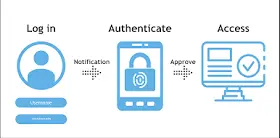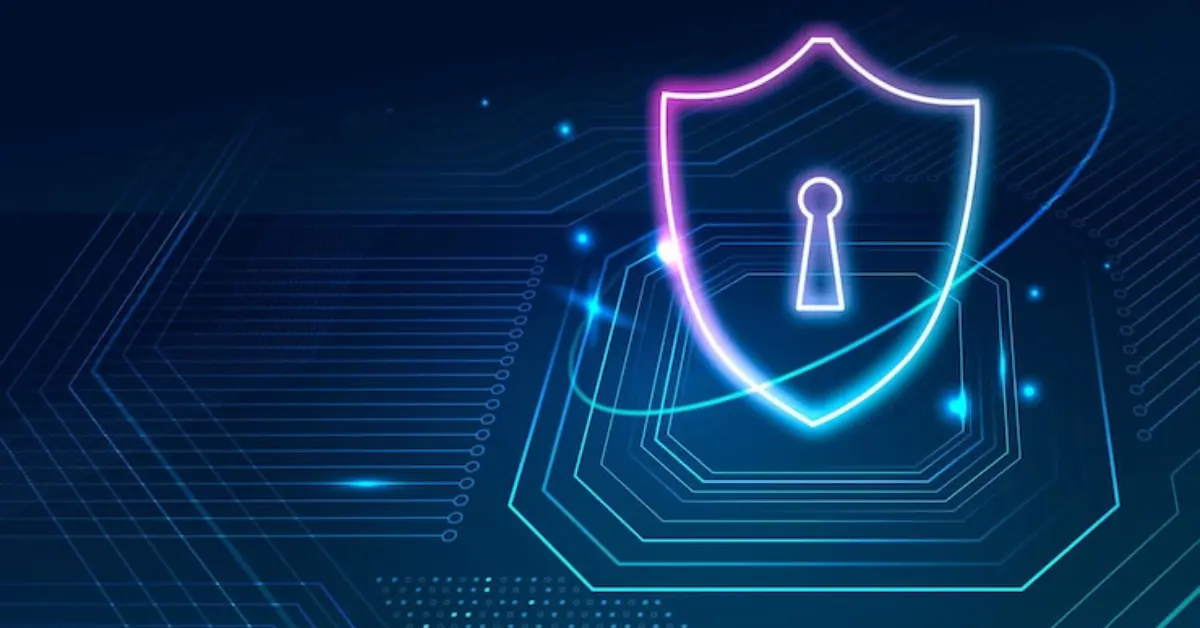Introduction
In an era dominated by digital connectivity, safeguarding your online presence is more crucial than ever. With the increasing prevalence of cyber threats and data breaches, taking proactive measures to ensure digital privacy has become a necessity. This article will provide you with 10 essential tips to fortify your online privacy and protect your sensitive information.
Strong Passwords and Two-Factor Authentication (2FA)
In the digital age, where cyber threats loom large, establishing a robust defense mechanism for your online accounts is paramount. Two key components of this defense are strong passwords and Two-Factor Authentication (2FA). Let’s delve into these elements and understand why they are crucial in safeguarding your digital assets.
1. Strong Passwords
A strong password serves as the first line of defense against unauthorized access to your accounts.
Here’s what constitutes a robust password:
- Complexity is Key: Create passwords that are a combination of uppercase and lowercase letters, numbers, and special characters. Avoid easily guessable information like birthdays or names.
- Unique for Each Account: Reusing passwords across multiple accounts is a risky practice. If one account gets compromised, all others with the same password become vulnerable. Use a unique password for each platform.
- Regular Updates: Change your passwords periodically. Regular updates add an extra layer of security by minimizing the risk associated with long-term use.
2. Two-Factor Authentication (2FA)
While a strong password is effective, 2FA adds an additional layer of protection. Even if your password is compromised, a second authentication step is required to gain access.

Here’s why 2FA is essential:
- Extra Layer of Security: 2FA typically involves a combination of something you know (password) and something you have (e.g., a code sent to your phone). This dual verification makes it significantly more challenging for hackers to breach your accounts.
- Diverse Authentication Methods: 2FA methods vary, offering options like text messages, authenticator apps, or hardware tokens. Choose the method that aligns with your preferences and provides the highest level of security.
- Easy Implementation: Many online platforms and services now offer 2FA as an option. Enable this feature wherever possible to enhance the security of your accounts.
Final Thoughts
In an era where cyber threats are increasingly sophisticated, relying solely on passwords is no longer sufficient. Combining strong passwords with Two-Factor Authentication creates a formidable defense against unauthorized access. Take the time to implement these security measures, and you’ll significantly reduce the risk of falling victim to cyber-attacks, ensuring a safer and more secure online experience.
(Remember, your digital security is in your hands – make it strong, make it smart)
Regularly Update Your Software and Devices
Ensuring the security of your digital presence goes beyond just creating strong passwords and implementing two-factor authentication. Regularly updating your software and devices is a fundamental aspect of maintaining a robust defense against evolving cyber threats.
Let’s explore why keeping your digital arsenal up-to-date is crucial:
1. Patch Vulnerabilities:
Software updates often include patches that address known vulnerabilities. Cybercriminals exploit these vulnerabilities to gain unauthorized access or launch attacks. By regularly updating your software, you close these security gaps and fortify your digital defenses.
2. Enhanced Security Features:
Updates not only fix vulnerabilities but also introduce new security features. Developers continually strive to improve the security posture of their products, and by updating, you ensure that you benefit from the latest advancements in digital security.
3. Protection Against Malware:
Malware developers are constantly devising new ways to infiltrate systems. Software updates often include improved malware detection and removal tools, protecting your devices from the latest malicious software.
4. Compatibility and Performance:
Staying on top of updates ensures that your software remains compatible with other applications and services. It also enhances the overall performance of your devices, contributing to a smoother and more efficient user experience.
5. Operating System Stability:
Operating system updates are critical for the stability and security of your device. These updates not only address security issues but also fix bugs and improve the overall performance of your device.
6. Protection Against Exploits:
7. Automatic Updates:
Enable automatic updates whenever possible to ensure that you don’t miss crucial security patches. This feature streamlines the process, reducing the risk of oversight and keeping your devices consistently protected.
8. Mobile Devices and Apps:
Don’t forget about your mobile devices and apps. Mobile operating systems and applications receive frequent updates to address security issues and introduce new features. Regularly check for and apply updates on your smartphones and tablets.
Use a Virtual Private Network (VPN)
In an age where online privacy is increasingly at risk, using a Virtual Private Network (VPN) has become an essential tool for safeguarding your digital identity.
Let’s explore why incorporating a VPN into your online routine is crucial and how it can elevate your digital privacy:
1. Encrypting Your Internet Connection
VPNs employ robust encryption protocols to secure your internet connection. This means that any data transmitted between your device and the internet is encrypted, making it significantly more challenging for potential attackers to intercept and decipher your sensitive information.
2. Protecting Data on Public Wi-Fi Networks
Public Wi-Fi networks, while convenient, are often hotspots for cyber threats. Using a VPN when connected to public Wi-Fi adds an extra layer of security, preventing malicious actors from snooping on your online activities or attempting to exploit vulnerabilities in the network.
3. Anonymous Browsing
A VPN masks your IP address, providing you with a degree of anonymity online. This prevents websites and online services from tracking your real-world location and helps protect your identity from potential profiling or tracking.
4. Accessing Geo-Restricted Content
5. Securing Online Transactions
When making online transactions, such as banking or shopping, a VPN ensures that your sensitive data is transmitted securely. This protection is especially crucial when using unsecured networks or public Wi-Fi, where cybercriminals might attempt to intercept financial information.
6. Preserving Privacy from Internet Service Providers (ISPs)
Your Internet Service Provider has the ability to monitor your online activities. Using a VPN prevents your ISP from tracking your browsing habits, maintaining your privacy and preventing the potential sale of your data to advertisers.
7. Avoiding Government Surveillance in Restricted Regions
In regions where internet usage is subject to surveillance or censorship, a VPN can be a crucial tool for bypassing these restrictions, allowing individuals to access information and communicate freely.
8. Versatility Across Devices
VPNs are compatible with various devices, including computers, smartphones, and tablets. This versatility ensures that you can protect your online activities across all your devices, maintaining a consistent level of privacy.
Be Mindful of Social Media Privacy Settings
In the age of hyper-connectivity, social media has become an integral part of our daily lives. However, with the convenience of sharing and connecting comes the responsibility of safeguarding your privacy. Being mindful of your social media privacy settings is crucial in controlling who has access to your personal information.
Essential tips to ensure your social media accounts are well-protected:
1. Review and Customize Privacy Settings
Take the time to review and customize the privacy settings on each of your social media accounts. Platforms such as Facebook, Instagram, Twitter, and LinkedIn offer granular controls over who can see your posts, personal information, and contact details.
2. Limit Profile Visibility to Friends Only
Set your profile visibility to “Friends Only” or the equivalent privacy setting on other platforms. This ensures that only people you have approved as friends or followers can view your complete profile and posts.
3. Be Selective About Friend Requests
Exercise caution when accepting friend requests or connection requests. Only connect with individuals you know personally or trust. Avoid adding strangers to your network, as this can expose your personal information to unknown entities.
4. Regularly Audit Friend List
Periodically review your friend or follower list and remove any accounts that seem suspicious or unfamiliar. This helps maintain a tighter circle of connections and reduces the risk of your information being accessed by unwanted parties.
5. Adjust Tagging and Photo Settings
Configure tagging settings to require your approval before tagged posts appear on your profile. Additionally, adjust photo privacy settings to control who can see the images you are tagged in. This ensures that your online image is curated according to your preferences.
6. Control App Permissions
Be cautious about granting excessive permissions to third-party applications linked to your social media accounts. Review and manage the apps connected to your profiles, limiting access to only those that are essential.
7. Avoid Sharing Sensitive Information Publicly
Refrain from sharing sensitive personal information, such as your address, phone number, or financial details, publicly on your profile. Use private messaging features for such communication.
8. Utilize Restricted Lists
Some platforms offer features like Facebook’s “Restricted List,” which allows you to limit what certain friends can see on your profile. This can be useful for acquaintances or colleagues with whom you wish to share less personal information.
9. Educate Yourself on Platform Policies
Stay informed about the privacy policies and updates of the social media platforms you use. Being aware of changes in policies helps you adapt your settings accordingly and maintain control over your information.
10. Regularly Update Passwords
Ensure that your social media account passwords are strong and unique. Regularly update them to add an extra layer of security, and consider using two-factor authentication for enhanced protection.



